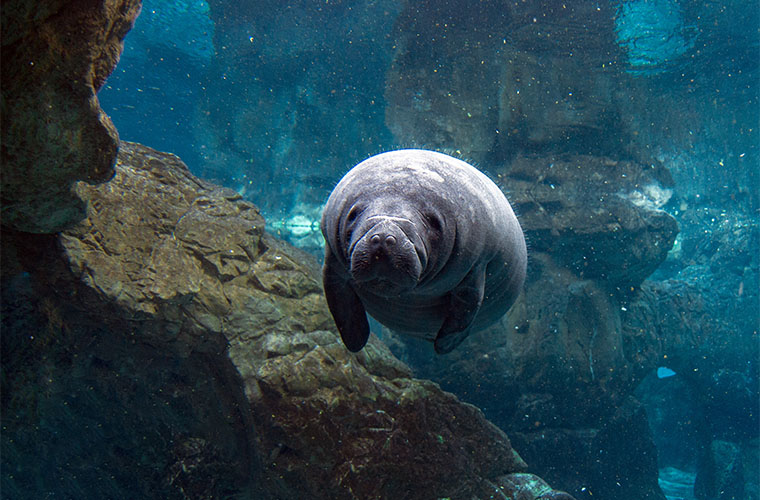Main Menu
- Home
- Products
- Applications
- Product Support
- Service
- Learn
- Product News
- About Us
- Contact Us
The effects of anthropogenic noise (noise caused by humans) on ocean ecosystems are complex. Noise interferes with an ocean animal’s ability to understand environmental cues vital to survival. Underwater noise caused by pile driving on large construction sites can confuse, stress, or disorient these animals, affecting their communication, behavior, physiology, ability to avoid predators, and reproduction. High underwater acoustic pressures can even be fatal to fish or marine mammals in extreme circumstances.

Download Guide to Marine Mammal Protection Noise Measurements to understand the metrics associated with marine mammal protection and discover tools to simplify measurement. |
In the United States, underwater noise regulations are set by the National Marine Fisheries Service (NMFS). Research by NMFS has determined acceptable noise thresholds for different types of underwater creatures. Regulations currently apply to two broad classes of underwater life: fish and marine mammals. When seeking permits for underwater construction projects, it is critical to understand the need to monitor and limit underwater noise levels. Technical guidance can be found in this NOAA Technical Memorandum. To simplify these measurements, Larson Davis has created a highly portable and easy-to-use Marine Mammal Noise Monitoring System based on SoundAdvisor Sound Level Meter Model 831C.
Internationally, underwater noise is recognized as a problem by groups such as the UN’s International Maritime Organization, which has issued guidelines on Ship Design and Construction, and International Ocean Noise Coalition. However, international regulations are sparse.
Larson Davis offers Marine Mammals Protection metrics and reporting with the Marine Mammal Noise Monitoring System based on SoundAdvisor Sound Level Meter Model 831C. These metrics are suitable for understanding the effects of pile-driving activities. Learn more by downloading our free Guide to Marine Mammal Protection Noise Measurements.
It is important to field calibrate sound measuring devices before and after each use. Take a look at our Guide to Calibrating a Sound Level Meter and Hydrophone to learn more. |
Mitigation options for noise caused by pile driving and drilling include things like curtains of air bubbles, Hydro Sound Dampers, cofferdams, specially designed piles that can be installed more quietly, surface treatment on piles, and specially constructed shells that incorporate multiple mitigation tools into one structure. For more information on mitigation techniques, please check with an underwater noise consultant.
Underwater Noise Pollution Is Disrupting Ocean Life—But We Can Fix It
by Aryn Baker, www.time.com
Underwater Noise Pollution Risking Whale Lives
by James Ashworth, www.nhm.ac.uk
Methodological Guide: “Guidance on Underwater Noise Mitigation Measures
Fifth Meeting of the Parties
to ACCOBAMS, https://www.cbd.int
Slow and Steady Saves the Race: We need to regulate underwater noise pollution to protect marine wildlife
by Sharon Livermore and Azzedine Downes, www.oecd-forum.org
International Regulation Undersea Noise
by Karen N. Scott, www.mmc.gov